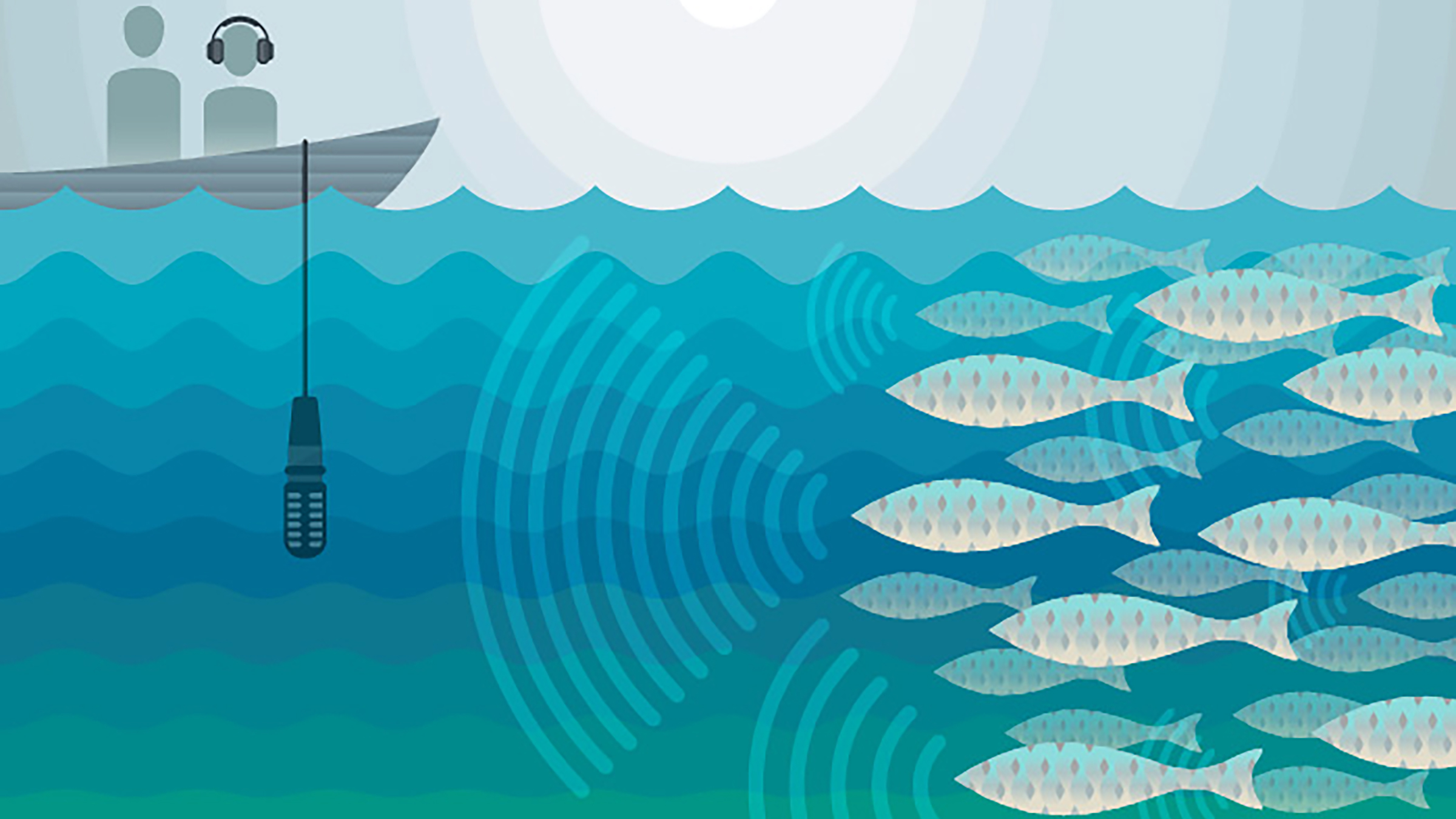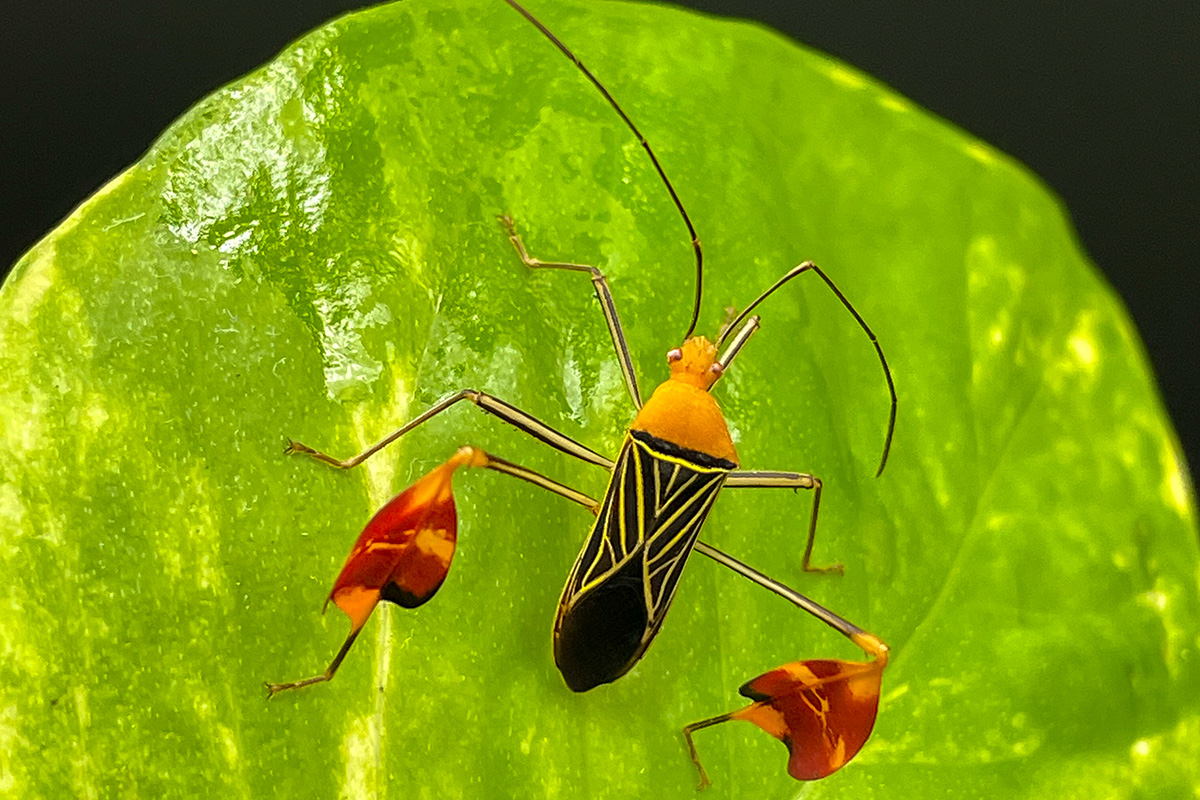Can Sound Save a Fish?
Gulf Corvina look pretty ordinary—they're a couple of feet long and silvery. Yet the sounds they make—when millions get together to spawn—are a kind of wonder of the natural world. It's also why they are in danger.

Gulf Corvina live in only one place in the world—the Gulf of California. A decade ago, the Mexican government asked marine biologist Brad Erisman and his colleagues to study the Corvina. They were worried that heavy fishing might cause the population to collapse. When Erisman put a microphone in the water for the first time, he was blown away by the sounds he heard.
Show Notes
Video: Spawning Aggregations, Natural Numbers
Video: Corvina Harvest, El Golfo, Marine Ventures Foundation
Unmanaged Fishing at Spawning Sites Put Species, Economies at Risk, UT Marine Science Institute
TRANSCRIPT
Marc Airhart: Gulf Corvina look pretty ordinary—they're a couple of feet long and silvery. It's their sound that sets them apart.
MA: That chorus is made by millions of fish. And it's what makes the Gulf Corvina one of the wonders of the natural world. It's also why they are threatened. But -- with the help of science -- the sounds they make might be the key to saving them.
MA: This is Point of Discovery. I'm Marc Airhart. Gulf Corvina live in only one place in the world -- the Gulf of California. They're a popular fish eaten across Mexico during the season of Lent. A decade ago, the Mexican government asked marine biologist Brad Erisman and his colleagues from the Gulf of California Marine Program to study the Corvina. They were worried that heavy fishing might cause the population to collapse. Erisman had heard that the fish make loud sounds, so one of the first things he did was borrow an underwater microphone – or hydrophone – from some of his colleagues who study communication in whales and dolphins.
Brad Erisman: So we went out there a couple of times and got the sounds and we were excited because we were right on top of the Corvina and we were all cheering and we had this thing in the water, and we go back and the grad student who worked with marine mammals said "Something's wrong with this hydrophone, it's clipping," which means it is flat lining, it doesn't record all the data, something is wrong with the hydrophone because it is just stopping at 160 decibels or 170 decibels, and … "there is no way fish are that loud."
MA: Eventually, they turned down the sensitivity of their equipment and Erisman's graduate student Timothy Rowell discovered that these fish can make sounds up to 192 decibels—enough to make your ear drums rupture—or possibly even kill you—if it were happening on land.
BE: It's louder than a rock concert. It's louder than standing less than a meter to a chain saw.
MA: The males are the only ones who make this sound, using swim bladders, which are like balloons full of air that help them float. Strong muscles around their swim bladders produce the sounds. It's kind of like putting your hands around a balloon and twisting.
BE: And it just sounds like screaming and that's what this is -- these fish are literally screaming.
MA: Several times each spring -- around the new and full moons -- the entire species – millions of fish -- migrate to the northernmost tip of the Gulf of California. That's when the change from high tide to low tide is the largest.
BE: … and then right when the tide starts to drain out, all the males start calling, and we call it chorusing, you can hear this constant pulsing and chorusing of these males …
MA: Love-struck males are making all this racket so the females can find them in the murky water. It's the equivalent of karaoke night at the local singles bar. It's a chaotic swirl of thousands to millions of fish. AND IT IS LOUD. The sound is boosted even further because they're packed into underwater canyons.
BE: … clearly it's not just the fish, but also the environment they're living in that's magnifying this sound and producing these ungodly, unheard-of levels of sound …
MA: But all this noise is dangerous. It's a dead giveaway to people who fish. The calls are so loud, fishers can hear them right through their boats. Each spring, they go out a couple of nights before a new or full moon and cruise around until they hear the loudest sounds.
BE: … the fishermen can literally drop their nets, they have a single net … and they have a 25-, 26-foot boat … two to three people and they can fill up two tons of fish, in less than ten to fifteen minutes, and then the rest of the time is pulling that net in and then they just drive back with a boat that literally is barely above water – and sometimes they sink -- and they can make their whole catch and then they're done.
MA: So a typical fisher goes out for a few days every couple of weeks -- and each time, the actual fishing takes about as long as it takes to listen to this audio story.
BE: … so basically about 20 to 25 days of fishing they get up to 6,000 metric tons of fish, with little fiberglass boats. So it's incredible. The fishing and the spawning are completely synchronized. These fish come in, they spawn with the outgoing tide, and the fishermen concentrate their effort specifically on that timing.
MA: It's a ritual that's played out as reliably as the change of seasons and the phases of the moon for as many years as people have sought a meal here. Until recently, Corvina populations have been steady. But there's been a big uptick in fishing in the last 20 years. It's become a major source of fish across Mexico during the season leading up to Easter -- Lent. Because the whole species spawns in one place, if this fishery collapses, that's it. It could take decades to recover. If ever.
BE: So, yeah, everyone is really concerned about whether this massive continual harvesting of the species is sustainable.
MA: It's not like those doing the fishing want this fishery to collapse. They just want a reliable source of income for their families.
BE: The fishermen are by no means the enemy here -- they're actually the ones that have provided us with all the information and access to the resource, and they're the ones most interested in sustainability.
MA: Just as the loud calls of the male Corvina make them an easy target for the fishing industry, the calls might be the key to saving them from extinction. Erisman and his colleagues wondered if they could use the sounds as a way to monitor when and where the fish are spawning and how many there are. Unfortunately, there are limitations with sound.
BE: If you ever go in your pool and have someone scream at you, you know you can't figure out whether they're in front or in back of you. And so we have these underwater microphones called hydrophones that do listen to these sounds, but targeting the source and the distance, and how many fish, is not trivial.
MA: Since a loud sound that's far away can sound the same as a quieter sound that's closer to the microphone, Erisman and his team needed a way to calibrate the sound intensity data from the hydrophones with another type of technology to count exactly how many fish are in an area. That technology is sonar. Sonar is more expensive and complicated to interpret than sound intensity data, but he only needs it for calibration.
BE: … if you can find a very strong predictable relationship between those two different independent measurements, now you've got something. … because you know that this sort of sound intensity and this loudness corresponds to about this many fish, and then you have a very powerful monitoring capability.
MA: Erisman and his colleagues recently finished calibrating sound intensity data from hydrophones for the Corvina. Their international research group, the Gulf of California Marine Program, has created an interactive online tool called dataMARES where anyone can study how Corvina populations have changed from year to year since the early 1990s. And those who fish, fisheries managers and conservationists can now do a better job of keeping Corvina populations sustainable.
BE: The idea is we try to bring all the stakeholders, different groups that have a stake in the fishery and the environment together to try to work it out. And it's nice that science is playing a role in that.
MA: Erisman's research is laying the groundwork for protecting other fish who spawn in large groups. Based at the University of Texas Marine Science Institute in Port Aransas, he is now applying the same methods to another fish closer to home – the spotted seatrout. It's one of the most commercially important fish along the Texas Gulf Coast. To see photos and videos of the annual Corvina harvest -- and for links to more resources -- visit pointofdiscovery.org. Point of Discovery is a production of the University of Texas at Austin's College of Natural Sciences. Christine Sinatra is our senior editor. I'm your host and producer, Marc Airhart. Thanks for listening.



